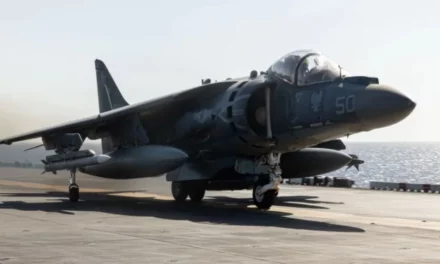My Near Death Experience
Air Facts Journal
This flight began with a fateful, but not unexpected phone call notifying family that Mom was close to the end of life. Preparations were quickly made to fly the Mooney from my home field of Lancaster, Pennsylvania (KLNS) down to Jacksonville, Florida (KJAX), along with my wife and son. A pit stop at North Myrtle Beach, South Carolina (KCRE) was planned, and after a weather briefing, I filed an IFR flight plan. We were wheels up around 1:30pm.

Preparations were quickly made to fly the Mooney from my home field of Lancaster, Pennsylvania (KLNS) down to Jacksonville, Florida (KJAX).
It was early August and the forecast included a large region of hot, humid unstable air blanketing the east coast, along with expectations of thunderstorm development increasing in number and intensity as the afternoon progressed. The worst of it was expected to be well east of the Carolina mountains and continuing into central Florida. The entire air mass was almost stationary, with very light southwest winds aloft.

The Mooney is well-equipped for weather avoidance as it is equipped with a sophisticated spheric lighting detector.
The Mooney is well-equipped for weather avoidance as it is equipped with both a sophisticated spheric lighting detector, and in more recent times, ADS-B information displayed on the iPad. I have flown trips between the northeast and southeastern states many times over the course of decades so the region is very familiar. Flying IFR at 6,000’ during the early portion of the trip to KCRE was unremarkable with only a few minor deviations around cumulus buildups over Maryland and Virginia.
As the flight progressed into southeastern Virginia, both onboard weather avoidance devices showed scattered rain and thunderstorms developing along the Atlantic coast, much of it within 20 miles from the respective beaches, beginning around Wilmington, North Carolina and extending down into north-central Florida. It was evident the North Myrtle Beach fuel stop needed to be replaced by an airport located further west. Whiteville, North Carolina (KCPC) looked like a good choice which was located about 50 miles northwest of Myrtle Beach. A new route direct to KCPC showed nothing threatening, except for one lone small rain cell located a comfortable distance to the southwest.
Approximately 50 to 60 miles from KCPC, I was still anticipating a visual arrival since airports in that region had been reporting VFR all afternoon. The lone shower to the southwest appeared larger and drifting slowly northeast. At the current groundspeed, I believed it shouldn’t be of much concern unless the cell began producing lightning. As we proceeded, clouds located between our position and the airport were coming into view. Nothing scary, but any hope for a side view of that nearby rain buildup was probably not going to happen.
Tuning in the AWOS, I heard an unpleasant surprise. KCPC was reporting IFR conditions with a 700’ ceiling and one mile visibility. That’s a surprise, but it explained the lower layers of clouds that were coming into view.
The next familiar airport further west was Florence, South Carolina (KFLO) which was 50 miles further inland. That was our “out” if the area of rain developed any lightning.
I requested a descent from 6,000’ down to 4,000’ and was denied due to traffic. Continued along at 6,000’ I advised ATC that the weather was received and requested the RNAV 24 approach. I was soon cleared to descend to 4,000’ and entered IMC during the descent while I located the approach chart to brief.
A long standing personal rule to is to always remain visual when in proximity to thunderstorms. Was this rule being broken? Not really. It’s only a rain shower, so no foul. A little voice inside my head then reminded me, “hey, you’re a CFI-I, no worries…get it done”.
ATC then informed us we were number two for the approach and to maintain 4,000’. We’re now following a Saratoga. This necessitated slowing the airplane down to leave the vertical space to descend another 2,000’ to reach the initial approach fix (IAF) at 2,000′. I requested a descent to the IAF altitude of 2,000’ but was only cleared to 3,000’. The IAF was looming closer. I queried ATC about when to expect the approach clearance and was informed that the Saratoga had appeared to land but the pilot hadn’t contacted ATC to close his IFR flight plan. I volunteered to leave frequency and contact Unicom to check, which ATC approved.
After a few attempts, Unicom finally answered with a yes, the Saratoga is at the gas pump. Unicom also confirmed the weather was still showing a 700’ ceiling with one mile of visibility. To say I was feeling rushed and getting behind the aircraft would be an understatement. The pesky little voice inside my head said, “this approach is doable, don’t worry about the shower, you’ll beat it there for sure…just keep the speed up.” We were directed to descend to 2,000’ and cleared for the RNAV 24 approach.
Fact: Mooneys can either go down, or slow down, but you can’t do both at the same time. I began a rapid descent from 3,000’ down to the 2,000’ for the IAF. The airspeed quickly increased to well above gear extension speed. Too many changes in speed and configuration had been occurring (with more ahead) for me to consider using the autopilot. I was more comfortable at this point hand-flying the approach as some old pilots (myself included) agree an autopilot can add another layer of complexity to IMC operations that could amplify any mistakes into distractions and confusion at the wrong time. Sometimes simpler is better.
I adjusted the descent rate to simultaneously arrive at the IAF at 2,000′ so we could now begin a descent to MDA, but I was still well above gear extension speed. The plan was to keep the speed up with wheels and flaps stowed and exit the clouds before the visual descent point (one mile out) at an altitude somewhere between pattern altitude and the published circle-to-land minimum altitude. I would then level off, slow down, dirty up, run a tight circle to land on the opposing runway. The little voice agreed. “Sounds good, you got it… what could go wrong?”
As I broke out of the clouds on the final approach course, I flew about 1.5 miles northeast of the airport in reduced visibility. I immediately leveled off at around 650’ AGL, and began slowing down. The approach end of runway 24 came into view, followed by the rest of the airport as we entered the left downwind to runway 6. Looking at the runway and ramp areas, I noticed the entire airport was soaking wet, and the visibility a little further out from the airport was a solid grey in all directions.
Continuing on the downwind leg, I dropped the gear, lowered the flaps to half, and further reduced power to slow down preparing for a tight and relatively steep low power base to final turn. Any thought that this could be the last and “final” approach I’d ever fly never entered my mind. As the airplane passed by the approach end of runway 6 a few strange wispy “ripped up” small pieces of clouds appeared off to the left. I had seen these clouds associated with turbulence before, but all appeared to be calm.
With my head turned left and brain focused on starting the descending turn to base, I reduced power a little more and all hell broke loose. The Mooney, with two of my loved ones onboard, flew into a wall of water. The sound was deafening and the surprise factor indescribable. My heartbeat probably jumped to over 200 in the matter of a millisecond. And worse, the bottom dropped out in a strong downdraft. This is bad, really bad, and I knew it. Low, slow, dirty and being pushed down towards the ground.
My attention went straight to the attitude indicator and full power applied. I pulled the nose up and retracted the gear. I don’t remember if the flaps were raised (hopefully not). My memory of the downdraft portion of this event still, seven years later, draws nearly a complete blank. While in the downdraft, I do remember three short mental snapshots of two different instrument gauges in the central region of the steam gauges. The first one is the airspeed showing 70 kts. (Vx). The second snapshot was the attitude indicator showing a very high nose up position. The third was the 45 degree left bank on the attitude indicator.
I have absolutely no recall of altitude or vertical speed whatsoever during the downdraft, but I would surmise we came to within a couple of hundred feet from being forced into the tops of the southern pines that surround the airport.
The best way to describe the volume of water associated with this cumulus buildup is driving on the interstate and encountering rain so extreme it was necessary to pull over and stop.
Unexpectedly, but very welcome, was a feeling in the seat of the pants indicating we had entered a strong and smooth updraft, which felt like ascending effortlessly upwards in a ballon. Details pulled from memory of the missed approach are all there and fully retrievable beginning with the updraft and realization the altimeter was indicating a brisk climb through 1,100’ MSL (1000’ AGL). During the updraft, I distinctly remember thinking “the hand of God is lifting the plane upwards”, along with a feeling of joy, and relief. My voice had also returned.
I announced a missed approach while continuing a gentle continuous counterclockwise 240 degree left turn around the airport, before pointing the plane west towards Florence, South Carolina (KFLO). I then informed ATC we were diverting there and was instructed to climb to 3,000’. We were in VMC conditions soon afterwards.
On the short flight to KFLO I asked my son about how much turbulence he felt during the missed approach. He explained not nearly as bad as some of what he’s experienced in past flights, but it was the noisiest ride ever. It’s amazing how the brain works during extreme stress with the realization two of my loved ones came so close to being killed at the hands of their pilot. I’ve never elaborated to them how serious a transgression this was.
After fueling, we remained on the ground for over an hour at the FBO and monitored the clusters of storms necessary to circumnavigate during the remaining leg. We then departed and continued to KJAX, which was interesting, but thankfully uneventful.
The post My Near Death Experience appeared first on Air Facts Journal.






